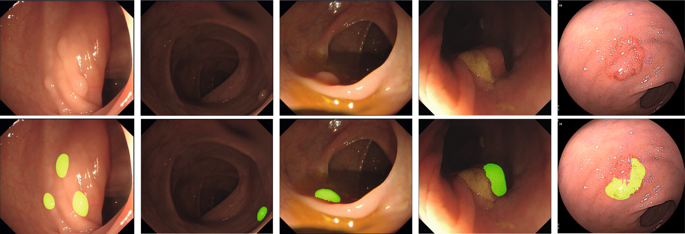機械学習で結腸ポリープを発見する
Detecting colorectal polyps via machine learning
2018年10月10日 Nature Biomedical Engineering 2 : 10 doi: 10.1038/s41551-018-0308-9

ディープラーニングアルゴリズムが、結腸内視鏡検査中の映像に基づくリアルタイムなポリープ識別を可能にする。その感度および特異性は90%を超える。
【関連コンテンツ】
Collection:医療における機械学習
疾病の診断および医療データの整理分類を加速させる機械学習の威力は医師の力となり、臨床現場での意思決定を迅速化させる。
Corresponding Authors
Colorectal cancer (CRC) is a major cause of cancer-related death. To decrease the incidence of CRC, it is recommended that neoplastic lesions (such as adenomas) be resected during colonoscopy1,2. A large cohort study conducted in the United States with 88,902 participants showed a roughly 70% reduction of death from CRC after colonoscopy screening3. However, the quality of the colonoscopy is important; adenoma detection rates (ADRs) during colonoscopy are inversely associated with the incidence of interval CRC (defined as cancer diagnosed between screening and post-screening surveillance examinations) and with CRC-related mortality4,5. However, many adenomas are missed during routine colonoscopy6, and ADR is significantly influenced by inter-endoscopist variability4, which is a major barrier to the standardization of high-quality colonoscopy. Computer-aided detection (CADe) systems powered by artificial intelligence could address this problem7. By indicating the presence and location of polyps in real time during colonoscopies, CADe can function as a second observer, potentially drawing the endoscopist’s attention to polyps that are displayed on the monitor but may be overlooked by the endoscopist.

